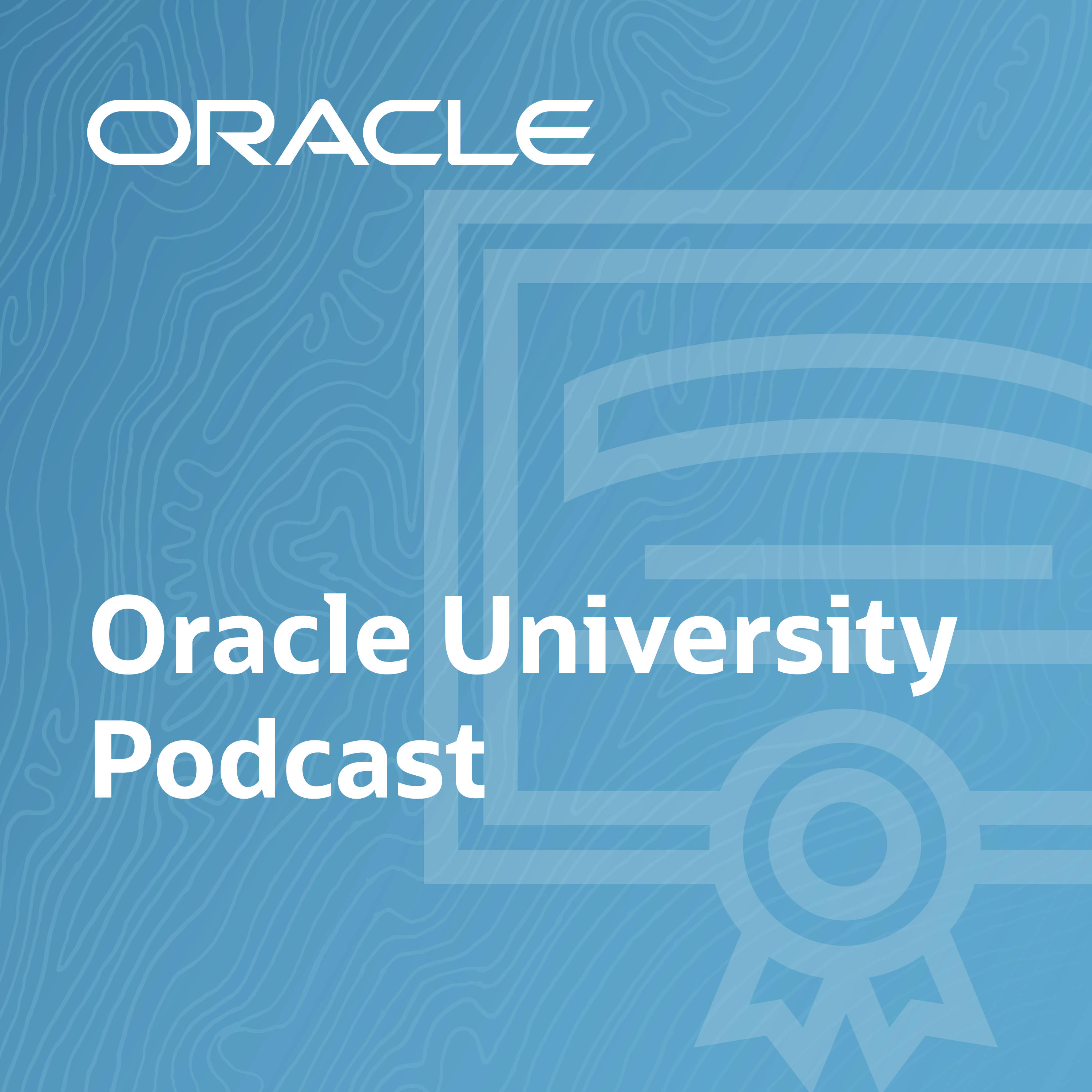Oracle AI Vector Search: Part 2
Description
Welcome to the Oracle University Podcast, the first stop on your cloud journey. During this series of informative podcasts, we’ll bring you foundational training on the most popular Oracle technologies. Let’s get started!
00:26
Nikita: Welcome back to the Oracle University Podcast! I’m Nikita Abraham, Team Lead of Editorial Services at Oracle University, and with me is Lois Houston, Director of Innovation Programs.
Lois: Hi everyone! Last week was Part 1 of our discussion on Oracle AI Vector Search. We talked about what it is, its benefits, the new vector data type, vector embedding models, and the overall workflow. In Part 2, we’re going to focus on vector indices and memory.
Nikita: And to help us break it all down, we’ve got Brent Dayley back with us. Brent is a Senior Principal APEX and Apps Dev Instructor with Oracle University. Hi Brent! Thanks for being with us today. So, let’s jump right in! What are vector indexes and how are they useful?
Brent: Now, vector indexes are specialized indexing data structures that can make your queries more efficient against your vectors. They use techniques such as clustering, and partitioning, and neighbor graphs. Now, they greatly reduce the search space, which means that your queries happen quicker. They're also extremely efficient. They do require that you enable the vector pool in the SGA.
Lois: Brent, walk us through the different types of vector indices that are supported by Oracle AI Vector Search. How do they integrate into the overall process?
Brent: So Oracle AI Vector Search supports two types of indexes, in-memory neighbor graph vector index. HNSW is the only type of in-memory neighbor graph vector index that is supported. These are very efficient indexes for vector approximate similarity search. HNSW graphs are structured using principles from small world networks along with layered hierarchical organization.
And neighbor partition vector index, inverted file flat index, is the only type of neighbor partition index supported. It is a partition-based index which balances high search quality with reasonable speed.
Nikita: Brent, you mentioned that enabling the vector pool in the SGA is a requirement when working with vector indexes. Can you explain that process for us?
Brent: In order for you to be able to use vector indexes, you do need to enable the vector pool area. And in order to do that, what you need to do is set the vector memory size parameter.
You can set it at the container database level. And the PDB inherits it from the CDB. Now bear in mind that the database does have to be balanced when you set the vector pool.
Lois: Ok. Are there any other considerations to keep in mind when using vector indices?
Brent: Vector indexes are stored in this pool, and vector metadata is also stored here. And you do need to restart the database. So large vector indexes do need lots of RAM, and RAM constrains the vector index size. You should use IVF indexes when there is not enough RAM. IVF indexes use both the buffer cache as well as disk.
<span style= "mso-fareast-font-family: 'Times New Roman'; mso-bidi-font-family: Calibri; mso-bidi-theme-font: minor-latin; mso-bidi-font-weight: bo






